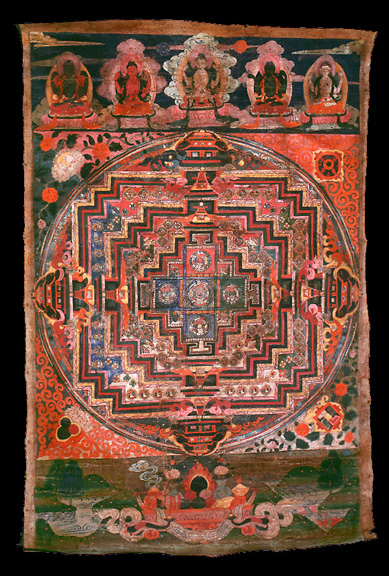

092
Bonpo Mandala
Thangka, painting
Cotton support with opaque mineral pigments in waterbased (collagen) binder
Size?
Indeterminate region
Ca. 17th or 18th century
Indeterminate style
Bon, the indigenous religion of Tibet, absorbed many Buddhist deities and practices. Indeed, by the time this mandala was created there was little difference between the two religions. The svastika in the lower right hand corner of the mandala is its distinguishing feature. It appears on almost all Bon works and symbolizes the eternal nature of the religion. The five figures along the top of the painting represent the four families of Bon with a central figure most likely to be a deity comparable in function to Vairochana. The families of the other figures are clearly indicated by their attributes: the family of the jewel, the lotus, the wheel, and the svastika, respectively. Bon practices, such as circumambulation and the spinning of prayer wheels, are usually performed counterclockwise. The swastika, shown in the painting is indicative of such a tradition.
Chris Moore
Museum #: 97.272
Huntington Archive Image Scan #: T1084